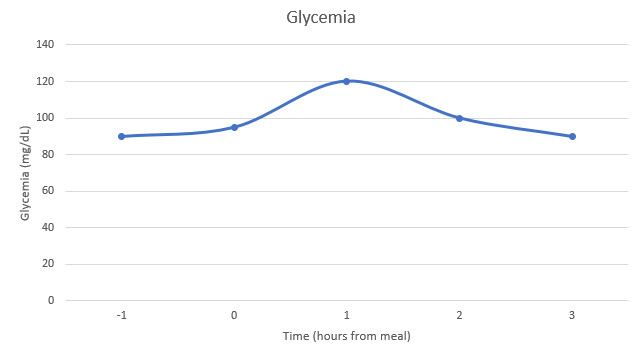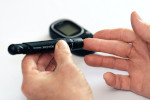One of the most important things to do once diagnosed with diabetes is to start tracking your glycemia. This is the one indicator that will tell you how your body is doing, the effect of what you eat or do, and more generally how your condition evolves.
But to monitor effectively, it’s important to understand it. Your glycemia tester, with the small needle in the finger, measures the glucose in the space between your cells. It is roughly equivalent to the glucose in your blood stream. If you test it several times a day, you can see the near real time effect of your activities.
For example, when you eat, you ingest fats, carbs, fibers, and various elements. Carbs are the one of interest as a diabetic. Whether they are long molecules (e.g. starch) or short (e.g. pure glucose), they’ll end up as glucose in your blood stream after digestion. The only real difference as far as we’re concerned between long and short molecules is the time it takes to get from them to glucose (hence you’ve heard that bread takes longer to digest and keeps you full for longer than chocolate).
Once the glucose arrives in your blood stream, you can measure it. Typically, a glycemia curve after a meal looks like the graph below. Before the meal, you get your base line. As you’re in fasting or near fasting mode (depending on whether it is breakfast or another meal of the day), ideally you want your glycemia to be less than 100mg/dl. Your actual level will depend on many things: stage of your diabetes, how much exercise you’ve done in the last few days, which meal you had earlier, even your mood and hormonal cycle.

At meal time, you ingest glucose and derivatives, and once the food arrives in your stomach, it gets broken down into simple elements (the stomach’s pH is 1.5 to 3.5 and will liquify pretty much anything). Then some the elements transfer to your blood stream and the rest of your digestive system. As a result, the absorption of glucose isn’t instantaneous: it takes a while for the food to get to your stomach (up to 20 minutes), then a while to start appearing in your blood stream depending on where it is assimilated. You can therefore see a curve that goes up from your base line to its peak over the next hour or so. Once again, the actual timing will depend on many factors, especially what you eat and in what order.
After your glycemia has reached its peak, it will start to go down over the next hour or so, until it goes back to your base line after 2 to 2.5 hours after meal.
When I started on my diabetes journey, my baseline was high and the peaks also very high, as you can see in the graph below: my base line was way above 100mg/dl, my glycemia didn’t really have time to come down between meals, and the spikes would reach 200mg/dl (I’ve seen 360mg/dl!). And that was with a walk after meals!

Your curve might look like the above. It can be higher. It can be lower. It will be what it will be. What’s important is that over time, as you manage your condition, it gets closer to the first graph. It will take weeks, months, or years, but that’s your goal.
Of course, your glucose tester can only give you a partial view of what your body does. It can’t see your fructose levels, for example (there is no home test for that). In some cases, e.g. if you eat a lot of fruit or some some sweeteners like corn syrup, your glucose spikes will hide an even larger fructose one. That’s bad because you won’t see it and it will have a similar effect on your body. So depending on what you eat, you should be aware of fructose contents.



